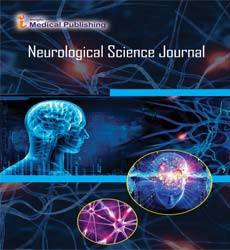Pre-adolescents, emotion regulation and prefrontal cortex: Effect of Mindfulness exercises on Emotion Regulation by increase top-down processes of the brain in pre-adolescents
Abstract
Statement of the Problem: Emotions and pre-adolescents are not always best friends. Not yet fully developed prefrontal cortex makes pre-adolescents emotional experiences more intense than other age groups. Effective emotion-regulation hinges upon an optimal balance between “bottom-up” emotional reactivity (brain regions lower down the limbic areas) and “top-down” cognitive and attention control (brain regions higher up the prefrontal cortex; PFC). During pre-adolescence, maturational brain changes occur including synaptic pruning of ineffective local neural connections and neuronal myelination of longer range neural connections. This enables the top-down regulatory regions of the PFC and the bottom-up sensory areas of the parietal cortex to become increasingly connected, facilitating the ability to employ methods of emotion-regulation. The purpose of this study is to describe the use Mindfulness to improve the emotions regulation and flexibility of pre-adolescents. Methodology & Theoretical Orientation: The theoretical framework of the research has been developed using the approach of neurocognitive and developmental psychology. This study was conducted in a quasi-experimental design with pre-test and post-test. Findings: The findings of the present study showed that mindfulness exercises have an effect on the emotion regulation of pre-adolescents. Conclusion & Significance: Due to the limited capacity of attention, there is competition between the two mechanisms of the brain (“bottom-up” emotional reactivity and “top-down” cognitive and attention control) over the use of cognitive resources. And Mindfulness make interaction between these two mechanisms of attention to activate flexibility responses to arousal arises from negative stimuli. The mindfulness protocol used in this study helped pre-adolescents to turn their attention to less distressing aspects of the stimulus when confronted with negative emotion stimuli. And between the “bottom-up” emotional reactivity and “top-down” cognitive and attention control processes, and provide more space to “top-down” processes. Increased processing of “top-down” processes led to better monitoring and management of negative emotions, and therefore pre-adolescents behaved more flexibly during emotional experiences.
Open Access Journals
- Aquaculture & Veterinary Science
- Chemistry & Chemical Sciences
- Clinical Sciences
- Engineering
- General Science
- Genetics & Molecular Biology
- Health Care & Nursing
- Immunology & Microbiology
- Materials Science
- Mathematics & Physics
- Medical Sciences
- Neurology & Psychiatry
- Oncology & Cancer Science
- Pharmaceutical Sciences
